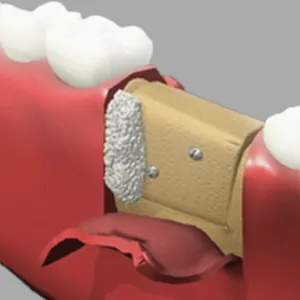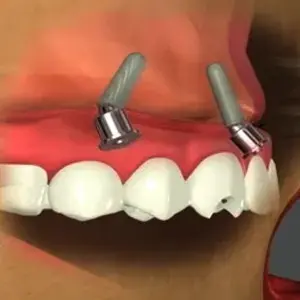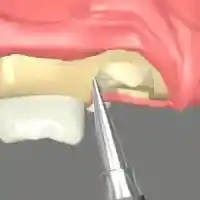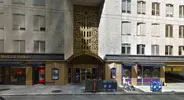Bone grafting is a widely performed procedure that plays a crucial role in restoring lost jawbone and creating a stable foundation for future dental implants. For many patients, knowing what comes after the surgery is just as important as understanding the procedure itself. If you're preparing for bone grafting, this guide will help you know what to expect during recovery and how to care for your healing mouth.
In our previous blog, “Common Myths About Bone Grafting in San Francisco”, we explored some of the most frequent misunderstandings surrounding the procedure, like whether it’s painful, risky, or only needed in rare cases. Understanding the truth behind these myths helps ease anxiety and prepares you for what’s ahead. Now, let’s take a look at what you can actually expect after your bone graft, from healing time to aftercare and follow-up.
Understanding the Healing Journey After Bone Grafting in San Francisco
If you’re preparing for a bone grafting procedure, understanding what comes after can help ease any concerns. This treatment is often essential for rebuilding bone and preparing the jaw for future dental implants. Now, let’s break down what you can expect during the healing process, step by step.
1. Mild Discomfort and Swelling
After undergoing bone grafting in San Francisco, it’s normal to experience mild pain, swelling, or bruising around the treated area. These symptoms usually peak within the first two to three days before gradually improving. Our oral surgeon will provide appropriate pain relief and aftercare instructions to help you stay comfortable. Applying a cold compress within the first 24 hours can help reduce swelling. It’s also important to rest and avoid any strenuous activities during the initial recovery period.
2. Diet Adjustments
For the first few days, stick to soft, non-chewy foods. Smoothies, applesauce, mashed potatoes, soups, and scrambled eggs are all safe options. Avoid chewing on the side where the surgery was performed. Spicy, acidic, crunchy, or hot foods may irritate the area and should be avoided as well. Also, avoid using straws — the suction could disturb the healing site and potentially cause complications, such as dry sockets.
3. Minor Bleeding Is Normal
It’s common to see slight bleeding or light pink saliva during the first 24 hours after your bone graft procedure. This is a normal sign that your body has begun healing. Your oral surgeon will use gauze over the treated area to help manage any bleeding. You’ll need to bite down gently but firmly for 30 to 45 minutes to allow a stable clot to form. Be sure not to spit, rinse, or touch the area right after surgery, as this can disrupt the clot and slow your recovery. If bleeding becomes heavy or doesn’t ease up within a reasonable time, contact your dental provider for support.
4. Oral Hygiene Guidelines
Keeping your mouth clean is crucial for avoiding infection and supporting a smooth recovery. For the first 24 hours, avoid brushing the graft site directly. After that, gently brush the nearby teeth, but continue to avoid the grafted area for several days. You may be given a prescribed antimicrobial rinse or advised to use a warm saltwater rinse to keep your mouth clean without disrupting the site.
5. Follow-Up Visits
Healing continues even after you leave the dental office. Attending regular follow-up appointments allows your dentist to track how well the bone is healing and to check for any signs of infection or complications. To monitor how well the graft is bonding with your existing bone, your dentist might take digital X-rays or use 3D imaging technology. These check-ups are a crucial part of your recovery plan and determine when you’re ready to move on to the next phase.
6. Healing Timeline
Everyone heals differently, but most patients can expect the full bone graft healing process to take 3 to 6 months. During this time, your body gradually builds new bone around the grafted area on its own. While you may feel better after just a few days or weeks, it’s essential to wait until your jawbone is strong enough to support a permanent solution, such as dental implants in San Francisco.
7. Readiness for Implant Placement
Once your bone graft has successfully healed and your dentist confirms the bone density is adequate, you’ll be cleared for implant surgery. A properly healed graft ensures the dental implant is stable, long-lasting, and looks and functions like a natural tooth. Without this strong foundation, implant success may be compromised, which is why bone grafting is such an important part of the process.
Conclusion
Recovery from a bone graft is a vital part of rebuilding your oral health and regaining confidence in your smile. With the care and support of a skilled San Francisco oral surgeon, you can feel confident every step of the way. Have questions or wondering if bone grafting is right for you? Reach out at 415-318-1818 to speak with our team — we’re here to support your journey to a healthier, more confident smile.


 Dental Implants
Dental Implants
 Teeth In An Hour
Teeth In An Hour
 Bone Grafting
Bone Grafting
 Wisdom Teeth
Wisdom Teeth
 Facial Trauma
Facial Trauma
 Other Services
Other Services
